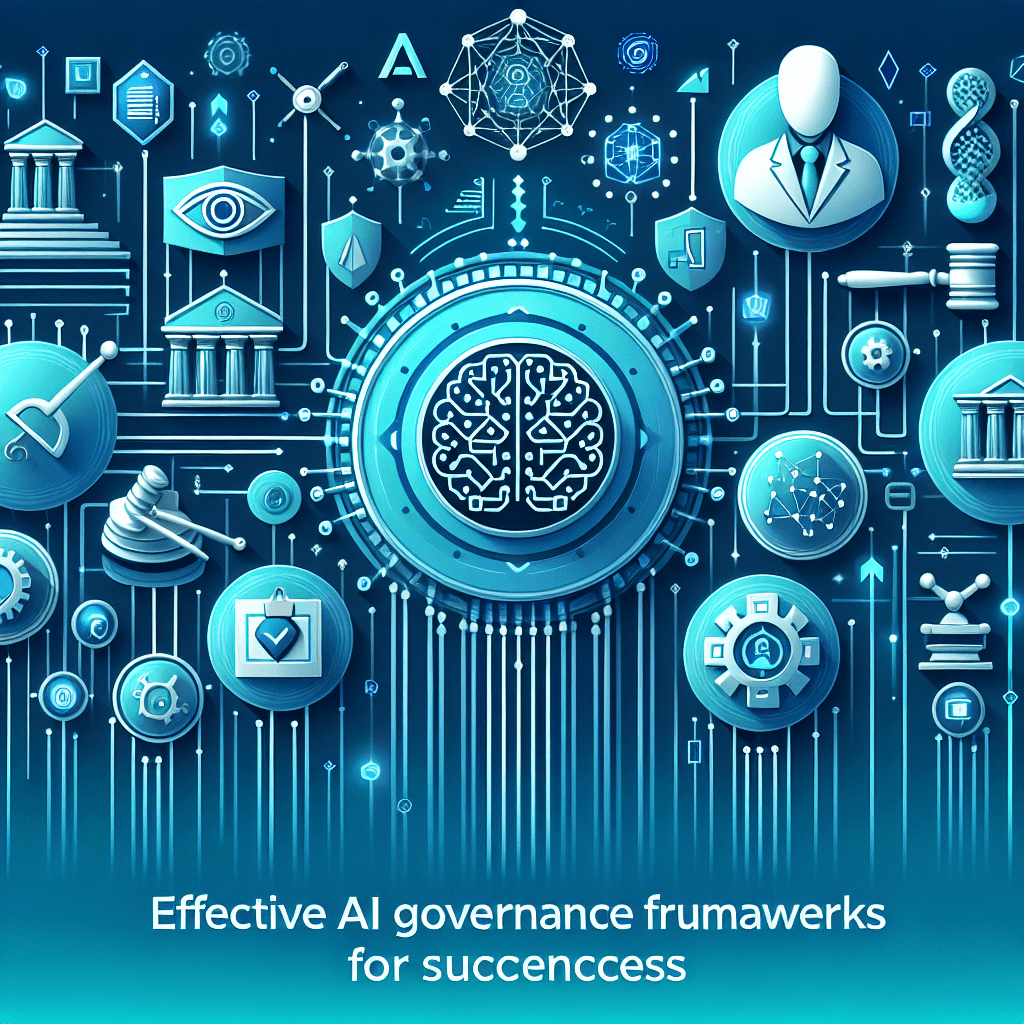Introduction: The New Era of AI Governance
Artificial Intelligence (AI) has surged into the forefront of both business and society, transforming how we interact with technology, make decisions, and approach complex problems. However, with this rapid innovation comes a pressing need for effective AI governance frameworks that ensure ethical deployment and societal benefit. Organizations are beginning to realize that without solid governance, the risks associated with AI could overshadow its advantages. This article will explore why governance is essential, the key elements that comprise an effective framework, and real-world examples from pioneering organizations.
Why AI Governance is Imperative
The Need for Regulation: AI does not operate in a vacuum; it impacts every sector by facilitating processes, improving efficiencies, and driving innovation. However, as we harness AI’s capabilities, the potential for misuse, bias, and ethical dilemmas intensifies. Implementing a governance framework can guide organizations in navigating these challenges responsibly.
Building Trust with Stakeholders: Public skepticism about AI isn’t uncommon. Recent studies suggest a significant number of users are wary of AI’s decision-making processes. A robust governance framework can help mitigate this skepticism by providing transparency, ensuring accountability, and fostering trust.
Understanding AI Governance Frameworks
What Constitutes an AI Governance Framework?: At its core, an AI governance framework is a structured set of guidelines, policies, and practices that organizations utilize to manage AI technology responsibly. Key domains often covered include ethics, regulatory compliance, risk management, and performance measurement.
Key Elements of Effective AI Governance
1. Ethical Principles Guiding AI Development
Ethical considerations should form the backbone of any AI governance framework. Principles like fairness, accountability, transparency, and privacy should be embedded throughout the AI lifecycle, from design to deployment.
2. Regulatory Compliance and Legal Concerns
Organizations must stay informed about local and international regulatory frameworks governing AI. Compliance not only mitigates legal risks but also positions companies as responsible innovators in the eyes of consumers and investors.
3. Risk Assessment and Mitigation Strategies
AI poses unique risks, including unpredictability and the potential for biased algorithms. Conducting regular risk assessments can help organizations identify vulnerabilities and implement appropriate mitigation strategies.
4. Stakeholder Engagement
Engaging stakeholders—including employees, customers, and the communities affected by AI initiatives—ensures diverse perspectives are taken into account. This collaboration helps foster a more inclusive framework that can adapt to various needs.
5. Continuous Monitoring and Evaluation
The AI landscape is continuously evolving. An effective governance framework must include robust monitoring processes to evaluate the impacts of AI in real-time, allowing for necessary adjustments and improvements.
Industry Examples of AI Governance Success
1. Google’s AI Principles
In 2018, Google established a set of AI principles outlining their commitment to responsible AI development. These principles emphasize safety, accountability, and user privacy, setting a potent example for other organizations.
2. IBM’s AI Ethics Board
IBM has taken a proactive approach by forming an AI ethics board comprising multidisciplinary experts. This board’s mandate includes developing best practices for ethical AI use, ensuring that AI solutions align with human values.
3. Microsoft’s AI Governance Guidelines
Microsoft emphasizes transparency in its AI governance framework, producing detailed documentation of its AI development practices. The company’s focus on accountability has garnered it favorable attention in the tech community.
Implementing an AI Governance Framework
1. Starting with a Clear Vision
Organizations should begin by establishing a clear vision that outlines their objectives regarding AI governance. This vision will guide the development of policies and practices tailored to their operational realities.
2. Engaging Executives and Leadership
Involvement from executives and leadership is crucial to the success of an AI governance framework. Their support and commitment can foster a culture of accountability and ensure that ethics remain a priority.
3. Training Staff on AI Ethics
Investing in training programs focused on AI ethics can equip teams with the knowledge they need to navigate the challenges of AI responsibly. Continuous training fosters an organizational culture that prioritizes ethical considerations.
4. Developing Collaborative Partnerships
Collaborating with other organizations, academia, and regulatory bodies can help organizations share best practices and stay informed about emerging trends in AI governance. This network approach reinforces a collective responsibility toward ethical AI use.
Challenges in AI Governance
Evolving Technologies
AI technologies are continually evolving, which can create challenges for static governance frameworks. Organizations must remain agile and adaptable to incorporate rapid advancements into their governance strategies.
Global Regulatory Landscape
The inconsistent regulatory landscape for AI presents challenges for organizations operating across multiple regions. Staying updated on each jurisdiction’s requirements can be a daunting task for companies.
Data Privacy Concerns
With AI systems relying heavily on data, privacy concerns are paramount. Organizations must invest in robust data governance practices that ensure compliance with various data protection regulations.
The Future of AI Governance
Embracing Innovation with Responsibility
As AI continues to advance, the focus on governance will be crucial. Responsible innovation will require organizations to embrace ethical considerations and build frameworks that prioritize societal benefits alongside technological progress.
Commitment to Lifelong Learning
In an ever-evolving digital landscape, organizations must prioritize lifelong learning within their teams. Embracing a culture that fosters constant education on AI ethics and governance can significantly improve compliance and accountability.
Collaboration for a Better Future
Cross-industry collaboration will be key to creating a cohesive framework that addresses AI governance challenges comprehensively. By sharing insights and experiences, organizations can work toward a unified approach for responsible AI deployment.
Conclusion: Investing in Effective AI Governance
In summary, the establishment of effective AI governance frameworks is no longer a choice; it is a necessity for organizations aiming to thrive in an AI-driven world. With AI’s pervasive influence on various sectors, integrating ethical principles, regulatory compliance, and risk management into a cohesive framework is imperative. Companies that invest in such governance will not only foster trust among stakeholders but also pave the way for sustainable and responsible AI innovation that benefits society. As we stand at this juncture in technology and ethics, the choices organizations make today will shape the future of AI governance for years to come.








